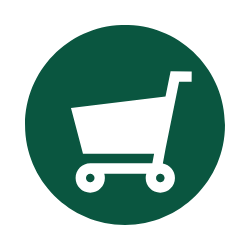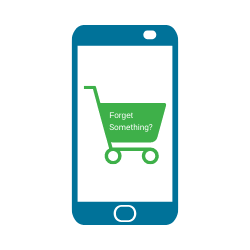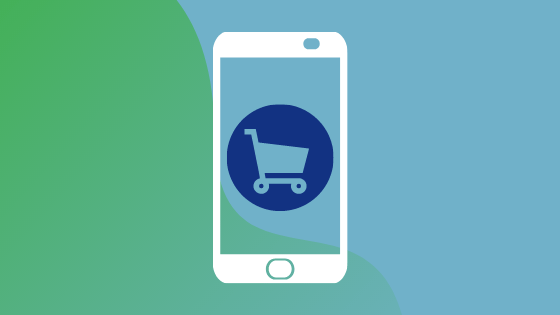You designed your eCommerce site to sell products and services. But even with a strong site and email marketing strategy, many shoppers will abandon their carts for a wide variety of reasons. Shopping cart abandonment is a persistent but solvable issue for eCommerce retailers.
Cart abandonment is when visitors add items to their cart, but they leave the checkout portal before completing their purchase. Having a high cart abandonment rate can indicate issues with your site experience and checkout process.

On the other hand, checkout abandonment describes the point where customers leave: Is it when they’re asked to create a user account or perhaps before they’re required to enter their payment details? Either way, it’s essential to understand the metrics of abandonment: When it happens and why.
Still, you can do something about shopping cart abandonment, including using an email marketing strategy. In this blog, we want to drill down on one of the most effective methods for lowering your cart abandonment rates: Marketing automation.
You can save time, resources, and lost sales by sending personalized marketing emails referring to the customer’s abandoned cart. Once configured, your cart abandonment email marketing process runs automatically without any extra work or resources needed on your part. Keep reading to learn more.
How Does Cart Abandonment Impact Your eCommerce Business?
Why do customers add items to their shopping cart only to leave without completing their order? Not only do you miss out on potential sales, but you also lose out on the opportunity to provide value to the shopper. Unfortunately, eCommerce cart abandonment rates are pretty high at a staggering 88.05%. In short, for every 100 customers, 88 leave without buying. Let’s make sure your eCommerce site does not contribute to this statistic.
The cost of cart abandonment can vary based on your rates and business. It’s vital to factor in the time and resources you spent optimizing and marketing your site. Invariably, cart abandonment is a negative for your bottom line as it increases your customer acquisition and retention costs. Now is the time to prepare a strategy for how to mitigate cart abandonment. Let’s discuss why cart abandonment occurs in the first place.
Determine Why Your Visitors Abandon Carts
Start by understanding why shoppers leave without paying.
1. Unanticipated shipping costs.
The primary reason why shoppers leave is due to hidden costs such as unexpected shipping fees or taxes. For instance, a customer thinks they have to pay one price, and the shipping adds $10 or more. Dealing with hidden costs is frustrating for customers. It’s like paying for a hotel room online, then checking in and finding out there are daily “resort fees” as well. If you can lower your shipping costs, please disclose them right on the product page.
2. Too time-consuming to create a new user account
In the digital age, customers demand convenience. Isn’t this why you created your eCommerce site in the first place? Consumers expect instant gratification. If there is any friction towards making a payment, it will lead to increased cart abandonment rates. So, re-examine your checkout process. Is it quick and user-friendly? If you would like new shoppers to create an account, let them do so by simply checking a box during checkout.
3. Researching for later.
There are cart abandonment reasons that are difficult to address without email marketing. Many shoppers do extensive research before making a purchase, comparing brands and deals. At times, they add items to their cart to save for later — it’s easier than writing down a list of the things they need. Often, they do intend to come back. Then, they forget. Sending a personalized marketing email can remind them of their carts.
4. Apprehensions about online security.
There isn’t any question that site breaches are at an all-time high. As a result, customers are concerned with the security of your payment site. If your online store has missing images, design flaws, or outdated layouts, it can send a significant red flag to potential buyers. Use an updated and secure payment portal to encourage trust.
5. The checkout process is too complicated.
Most shoppers want to tap and buy, in that order. They don’t like extensive and complicated checkout processes. If it takes too long to make a purchase, users will rate it as a poor experience and abandon their carts. So, it’s critical to streamline your checkout navigation and limit form elements.
Convert Shoppers into Happy Customers with Email Marketing
Your email marketing strategy should be one that covers all the bases of the shopper journey. From welcome emails to cart abandonment emails, there’s a message touchpoint that can be leverage to keep a shopper coming back. But if that sounds like a lot to manage, don’t worry. There’s a tool you can use to take a lot of your plate: marketing automation.

Marketing automation is undoubtedly a buzzword. It consists of digital marketing tools and multiple features that make it easy to send targeted email messages. Further, marketing automation provides a platform that drives growth and boosts customer engagement through automated messages.
Marketing automation accelerates your email marketing process so you can hyper-personalize your cart abandonment campaign by collecting data on your shopper’s interests to ensure your emails are relevant. Therefore, it’s crucial to learn how to send automated emails. Beneficial features of a robust marketing automation platform include:
- Adding dynamic content based on a visitor’s profile. For instance, you can send targeted emails with offers for items left in their carts.
- Integrating all your channels to deliver an multichannel experience. Thoughtfully interact at every touchpoint.
- Sending messages at the right time. Marketing automation offers tools to test variables such as personalized messages, send times, and subject lines.
- Segmenting shoppers by demographics, behaviors, and interests. Therefore, you can personalize every message and enhance open rates.
Consider the following email marketing best practices:
Remind customers about their abandoned carts to increase conversion rates. In many cases, customers will only respond to customized emails. Also, brands that segment their abandoned cart visitors for retargeting report a 1,300% ROI.
Send one or a series of tailored cart abandonment emails to encourage shoppers to return. Check out the tips below:
- Segment personalize and demographics. This critical step makes email conversions easier. In fact, personalized emails have a 50% higher open rate.
- Build and customize automated messages. Address your customers by name and offer additional support for making a purchase.
- Display left items. Provide precise details of the items your shoppers almost purchased, including images and price. Add offers when you have them, such as “Use this code in the next five days to get 10% off your purchase.”
- Link directly to the abandoned shopping cart. Make it easy for the shopper to return to their cart. It may be a reminder that they need to return and finally make their purchase.
Never forget the shopper was pretty close to buying from you, so sending your email marketing messages quickly will keep your eCommerce brand top of mind.
Email Marketing 101: Key Takeaway

It’s never too late to remind your customers what they left behind with an automated sequence of hyper-personalized emails. Not only do you have the opportunity to reconnect with your prospects, but you can remind them of the value your products and services provide.
With Springbot, you can customize your cart abandonment marketing campaign based on messaging type, timing, customer segment, and more. As a result, you can automate effective cart recovery emails and win back more sales.
Finally, if you would like to learn more about how Springbot helps hundreds of eCommerce retailers decrease cart abandonment, schedule a call with one of our experts today!




